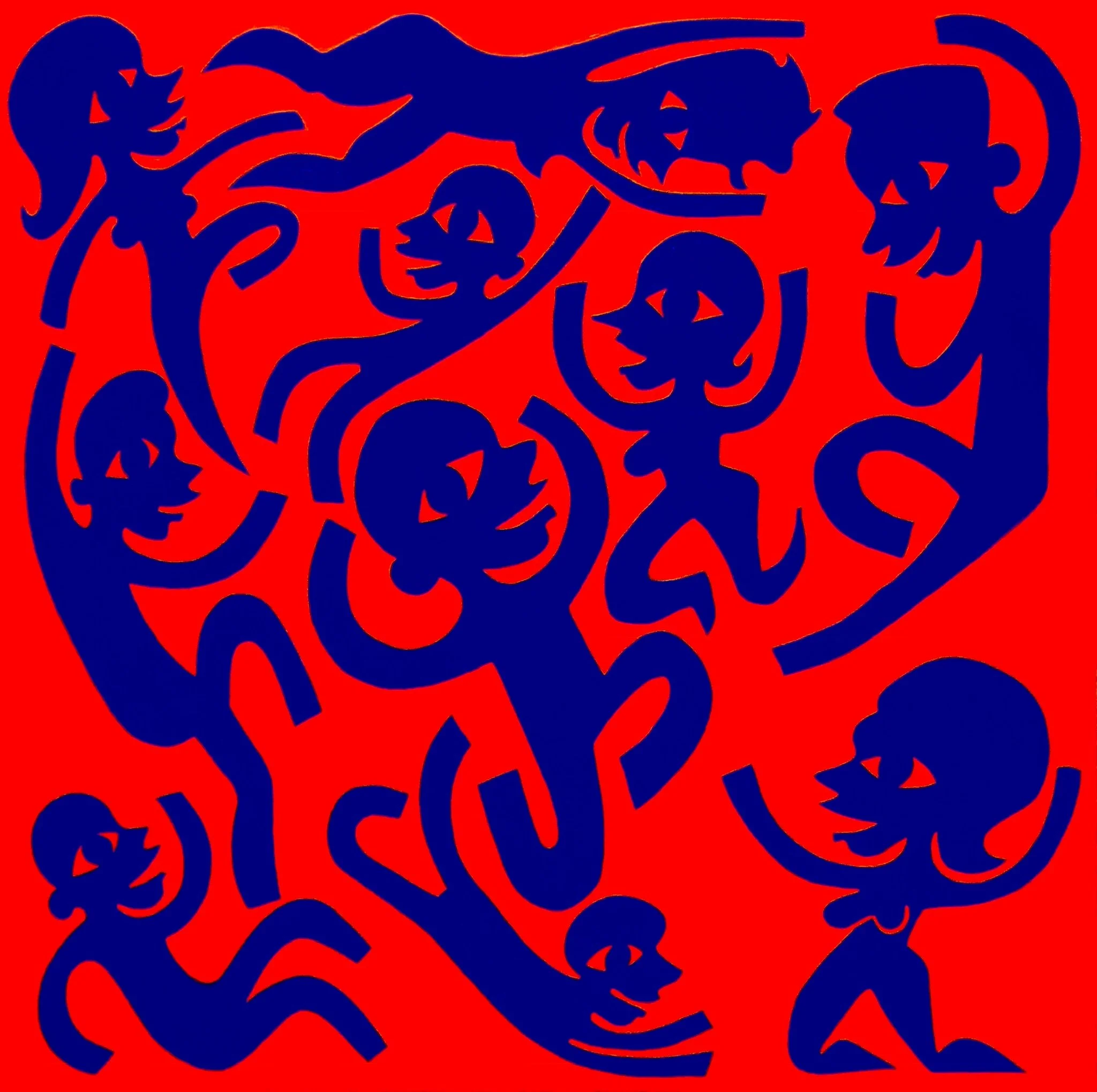The Resonant Echo: Unveiling the Ancient Lineage of My Signature Vision
Happy Happy Joy Joy, 2016
My artistic practice is built upon a deliberate and profound engagement with humanity's visual history. While the seeds of my signature style were sown during my formative years in college, it was in 2016 that this aesthetic truly matured, evolving into the distinctive visual language it is today, a language I believe offers a powerful new approach to contemporary narrative.
This maturation was ignited by a deep dive into the Art of the Ancient World. My heritage, rooted in Belize, naturally led me to the compelling forms of Mayan art. This early connection expanded into an enduring fascination with the monumental clarity of Egyptian art, a discovery often fueled by the captivating pages of National Geographic magazine. As my art historical studies continued through high school, I unearthed the striking beauty of ancient Ethiopian art. What emerged from this comparative study was a revelation: a shared, fundamental approach across these disparate, ancient cultures. I observed a common thread of flat, often animated figures, a profound minimalism in form, and consistently large, intentionally rendered side-profile eyes.
These large, captivating eyes, in particular, became a cornerstone of my artistic vocabulary. It's an innate human response to seek out the gaze within an image; these eyes serve as an immediate point of entry, drawing the viewer into the narrative. They are not merely anatomical features but focal points designed to command attention and initiate connection.
Yet, this stylistic choice goes far beyond mere visual intrigue. I recognized that embracing the simplified, universal language of these ancient traditions offered a profound capacity for storytelling. In contemporary art, where complex social narratives often contend with visual discomfort, this aesthetic provides a unique solution. I recall creating a piece inspired by a devastating news story of a young boy's murder. When I rendered it with stark realism, viewers struggled to engage; the intensity of the blood and immediate reality was too confronting, too close to home.
However, by adopting a simplified, almost archetypal figuration, much like the enduring power of classic animation where characters endure extreme situations without repelling the viewer, I found I could articulate profound human experiences and challenging truths without evoking immediate aversion. This abstraction allows for a more sustained contemplation of the underlying themes, inviting empathy and reflection rather than recoil. It allows for a deeper, more intellectual engagement with the narrative content.
This philosophical underpinning is encapsulated in "Happy Happy Joy Joy," the original piece named for the song from the exuberant yet often subversive energy of the 90s MTV cartoon, Ren and Stimpy.
My art, therefore, is not just about aesthetics; it's a deliberate reinterpretation of ancient communicative power for modern discourse. It’s about leveraging timeless visual principles to create contemporary narratives that are both compelling and thought-provoking, offering a unique perspective that transcends transient trends.
